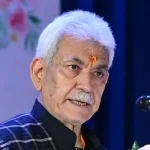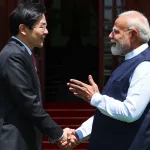When India abrogated Article 370 and 35A on August 5, 2019, integrating Jammu & Kashmir (J&K) fully into the Union, Pakistan anticipated widespread violence and a bloodbath to defame India globally. Expecting mass revolts and brutal suppression by the Government of India (GoI), Pakistan’s ISI and terror groups like Lashkar-e-Taiba aimed to rally international support and revive the Kashmir issue. Instead, Kashmiris embraced the changes, leading to economic, social, and political empowerment of J&K.
Pakistan’s military establishment has been seeking to shatter India’s claim that “peace is restored in Kashmir.” However, Kashmiris cooperated, recognizing the abrogation as a step toward opportunities that were stifled for long due to J&K’s isolation and there by exposed Pakistan’s propaganda, as baseless. According to the Ministry of Home Affairs (MHA), terrorist incidents dropped by 65% from 2018 to 2023 and civilian casualties in 2023 reached their lowest in three decades.
Post-2019, J&K has seen remarkable progress. Over 2 crore tourists visited in 2023, a record high (Kashmir Tourism Department). Over Rs 3000 crore has been proposed in private investments for infrastructure, including hotels and IITs/IIMs (J&K Economic Survey 2023).
Terrorist incidents dropped 65% from 2018–2023, with civilian casualties at a 30-year low (MHA).70% voter turnout in 2020 District Development Council elections and then a huge turnout and participation to form a democratically elected government in 2024. The abrogation opened investment and job opportunities, aligned J&K’s governance with India, and fostered inclusion through projects including Smart City Srinagar.
Kashmir’s stability has threatened Pakistan’s narrative of oppression, weakening its justification for terrorism. Pakistan and its ilk in Kashmir has been looking for ways to disrupt tourism and economic growth, Instil fear to deter Kashmiri participation in development and Challenge India’s peace narrative. Any progress in Kashmir is against the grounding philosophy of Pakistan, that operates on “Bleeding India by 1000 cuts” or calling Kashmir as their “Jagualr Vein”
Strategic Motives behind the Anantnag Massacre
The Anantnag massacre carries a profound significance for its calculated timing, location, targets, and brutal execution.
Timing
For Pakistan, that is in most severe historical crisis at this time, the attack is a strategic manoeuvre to divert attention from its mounting domestic turmoil. As on day, Pakistan’s terror infrastructure has been severely weakened by India’s financial crackdowns, including pressure from the Financial Action Task Force (FATF), which curtailed funding to groups like LeT and JeM.
Pakistan grapples with resurgent insurgencies, particularly from the Tehrik-i-Taliban Pakistan (TTP) and Baloch separatists. The TTP conducted over 150 attacks in 2024, primarily in Khyber Pakhtunkhwa, encouraged by the Taliban’s control in Afghanistan. The March 2025 Jaffar Express train attack by Baloch separatists, killing 33 hijackers, exposed Pakistan’s security vulnerabilities. On the other hand, Pakistan’s economy is in dire straits, with a 2025 GDP of $348.72 billion, less than one-tenth of India’s $4.2 trillion. Depleting foreign reserves, inflation is projected at 5.5–7.5% for 2024–25, and the fiscal deficit is 7.4% of GDP. The 2024 floods further devastated agriculture, worsening food price surges.
As far as Pakistan’s Military resources are concerned they are facing unprecedented public criticism for corruption and mismanagement and they are reported to be also heavily stretched at the moment and unverified claims of internal dissent within the army is further adding to the pressure. Jihadi recruitments have also dwindled, with J&K Police data reporting only 100–150 new recruits annually in recent years, compared to 500–600 previously. India’s narrative of restored peace in Kashmir, championed by Prime Minister Narendra Modi, has gained traction domestically and internationally.
By masterminding the Pahalgam attack at this time, the Inter-Services Intelligence (ISI) likely aimed to redirect militant energies toward India, easing domestic security burdens and unifying the military under an anti-India narrative.
Location & Target
Pahalgam is a cornerstone of Kashmir’s tourism industry, attracting millions of visitors annually with its scenic landscapes, adventure activities. Tourism accounts for a significant portion of the region’s economy, supporting livelihoods through hospitality, transportation, and small businesses.
By targeting Pahalgam, terrorists aim to cripple this economic lifeline, creating widespread financial distress and eroding investor confidence in the region’s stability. The serene and relaxing image of Pahalgam makes it an ideal stage for a high-profile attack. A violent incident in a place associated with peace and beauty amplifies fear and insecurity, ensuring that the message of vulnerability resonates far beyond Kashmir. The attack’s location was chosen to maximize media attention and public outrage, carrying the terrorist’snarrative to every household across India.
Pahalgam also serves as a gateway to the Amarnath Yatra, one of Hinduism’s most sacred pilgrimages, drawing millions of Shiv Bhakts each year. An attack in this area directly threatens the safety of pilgrims, discouraging participation in the Yatra and disheartening the religious enthusiasm of millions. Disrupting this pilgrimage, weakens the cultural and spiritual ties that bind Kashmir to the rest of India and also aligns with the terrorist’s goal of isolating the region.
The attack also builds on a pre-existing narrative, propagated by certain local political elements, that portrays tourism in Kashmir as a “cultural invasion” by outsiders, particularly Hindus. By targeting Hindu tourists and pilgrims, the terrorists lend credence to this rhetoric, framing their violence as a defence of local identity against perceived external dominance. This narrative seeks to alienate Kashmiri Muslims from the broader Indian populace, deepening regional divides and inflame Hindu-Muslim tensions, both in Kashmir and across India, potentially sparking communal violence that would further destabilize the region and strain India’s social cohesion.
Brutal Massacre
The adoption of a Hamas-style killing in the terrorist attack in Kashmir is a calculated and multi-dimensional strategy aimed at escalating tensions, mobilizing radical elements, and reinforcing a narrative of religious supremacy over development. This approach is not merely an act of violence but a deliberate attempt to reshape the socio-political and religious landscape of Kashmir while amplifying the terrorist’s influence both locally and globally.
By copying the tactics associated with Hamas, known for high-profile and provocative attacks, the perpetrators aim to create a sense of crisis, pushing India toward a heavy-handed response. Such a response could escalate tensions, potentially leading to a war-like situation that destabilizes the region further. The attack serves as a bold declaration of the terrorists’ presence, signalling to both local and global audiences that their movement remains active and formidable.
By adopting a Hamas-inspired approach, the perpetrators highlight their alignment with globally recognized radical ideologies, ensuring that their actions cannot be ignored. This tactic is designed to counter any narrative of declining militancy in Kashmir, reinforcing the perception that the armed struggle is alive and capable of disrupting the status quo.
By showcasing a high-profile act of violence, the terrorists also aim to inspire and recruit young individuals to join their ranks, presenting the armed struggle as a noble and divinely sanctioned path. The Hamas-style killing is also a strategic move to position the Kashmir conflict within the broader narrative of global jihad.
While we are examining the compulsions of Pakistan to orchestrate such attacks, we also need to be mindful that such incidents are not possible without the local involvement. The terrorism challenge in Kashmir thrives on a complex societal dynamic. These incidents potentially rely on overground support that reveals a deep cognitive dissonance and also reflects a dangerous bipolarity that breeds duplicity, manipulation and mistrust. Such massacres are not feasible without overground support from local sympathizers. These individuals provide critical logistics, safe houses, feedback, or communication channels enabling to execute attacks.
According to J&K Police, over 700 overground workers were arrested between 2019 and 2023, highlighting their pivotal role. For instance, in the 2023 Anantnag attack, local informants reportedly guided terrorists to target pilgrims, exploiting insider knowledge of routes and security gaps. This reliance on overground networks highlights a troubling collusion within segments of society, without which such attacks would falter against India’s robust counter-terrorism measures.
I think a section of Kashmiri society grapples with cognitive dissonance, a state of mind where one simultaneously embraces the benefits of peace and at the same time engages with radical ideologies. Post the 2019 abrogation of Article 370, J&K has seen transformative progress; yet, radicalization persists, fuelled through social media propaganda glorifying militancy.
For example, I have personally witnessed some business men or local shopkeepers in Srinagar who welcome tourists during day, praise the peace but by night criticise India that is driven by ideological indoctrination. This dissonance is evident in communities that celebrate infrastructure projects like Smart City Srinagar but remain silent when overground workers are exposed, reflecting a conflicted allegiance between peace and radical narratives. I was watching interviews of locals, post this incident, and most of them were hesitant to even criticise Pakistan. There appeared to be a complete state of denial.
This cognitive dissonance manifests as a societal bipolarity, oscillating between aspirations for progress and the pull of radicalization, a condition dangerous for Kashmir’s social fabric. This bipolarity fosters duplicity, where individuals wear façades to navigate competing pressures.
Such duplicity creates a climate of mistrust, where no one knows who is genuine. Security forces struggle to distinguish allies from adversaries, as seen in cases where seemingly cooperative locals have tipped off terrorists about troop movements. This manipulation erodes community cohesion, as neighbours suspect each other of hidden agendas, and the broader society suffers from a fractured identity.
Kashmir stands at a critical juncture, where its people must unite to eradicate this duplicity that undermines their society and align their public and private actions with authentic nationalism. The Kashmiri society bears a profound responsibility to revolt against manipulative and deceptive behaviors, such as those enabled by the controversial concept of Al-Taqiyya, Kitman, Muruna, Tawriya, which some misinterpret as a license for deceit.
Such deception, falsely deemed ‘halal’ by misinterpretations of Al-Taqiyya, must be declared haram and unequivocally rejected. Instead, Kashmiris need to emulate the valour and spirit of heroes like Syed Adil Hussain who attained martyrdom while fighting these terrorists and saving many lives. Kashmiris need to emulate people like Lt Umar, Usman who are true spirits of nationalism.
There is also a high need to revive the syncretic Rishiwer tradition, a beacon of coexistence and integrity that defines true Koshurut. The real Kashmirian DNA lies in the cultural renaissance, rooted in harmony and pluralism, that is essential for current and future generations to counter the radicalizing influence of Wahabi, Salafi, and Deobandi ideologies that alienate communities from India’s national spirit.
One needs to understand that being a true Muslim and a devoted Indian patriot are not conflicting identities; they are harmonious expressions of a unified commitment to peace and progress. When we prioritize the nation’s safety and unity, we secure the sanctity of our spiritual lives. The path forward demands intellectual courage.
Kashmiris must choose to extinguish the flames of deceit and radicalism or they risk a perpetual conflict. By embracing transparency and syncretic nationalism, they can forge a future of peace, prosperity and unity, ensuring Kashmir’s enduring place in India’s pluralistic framework.








